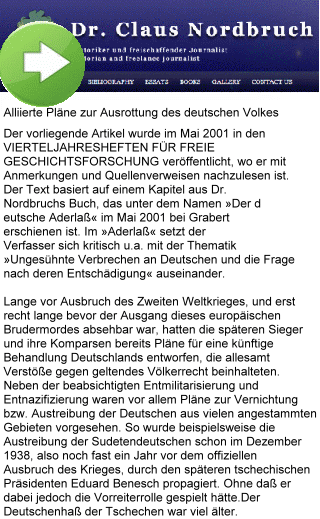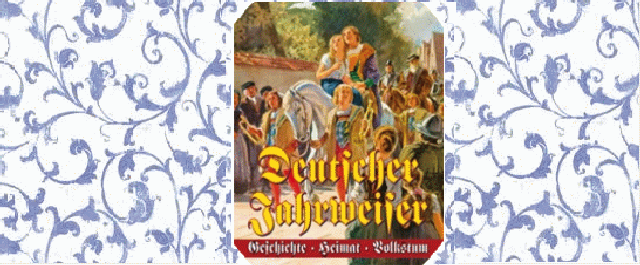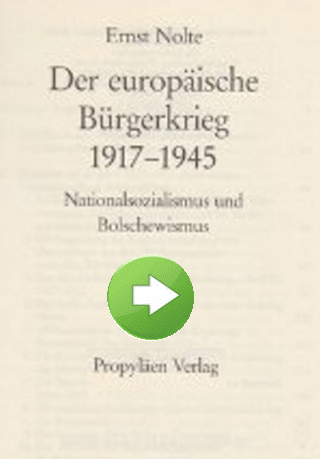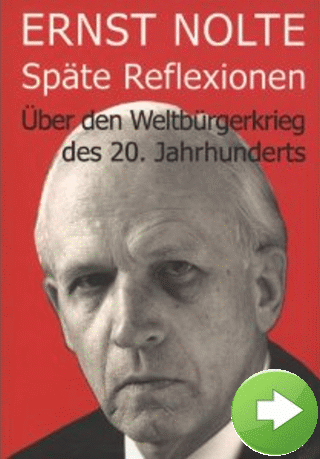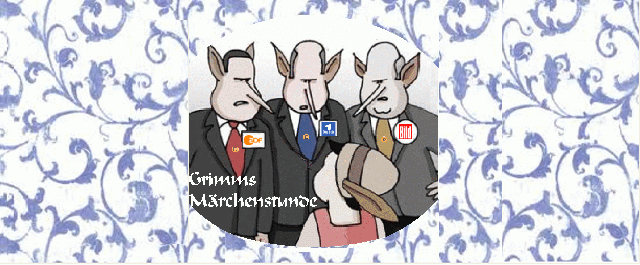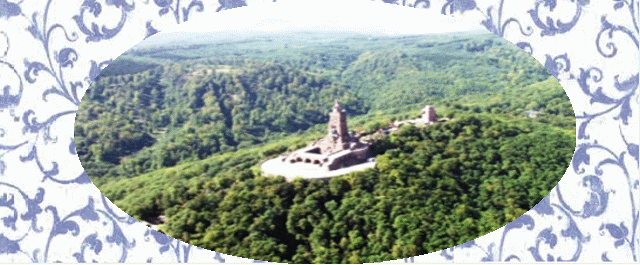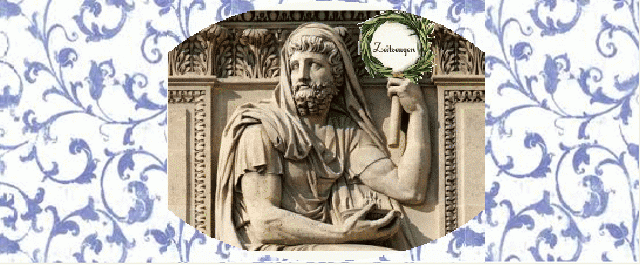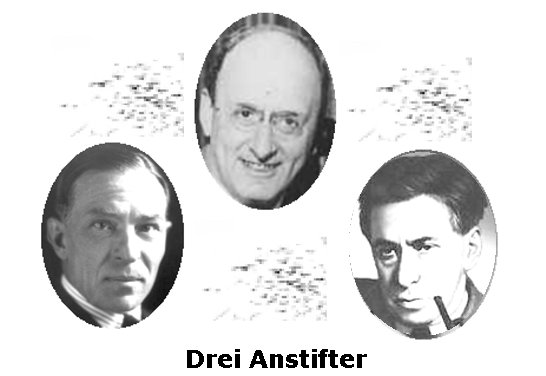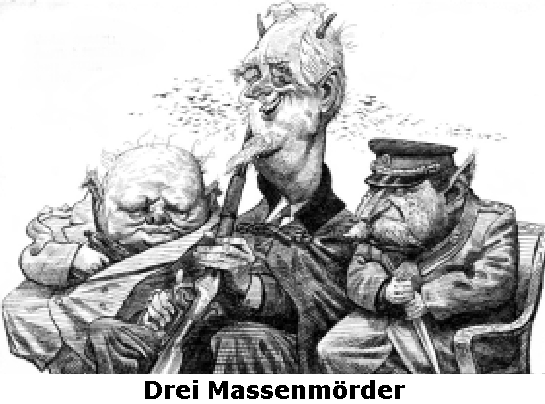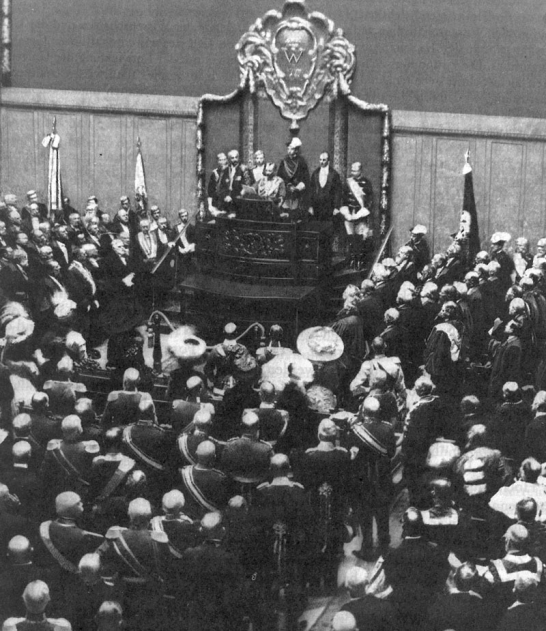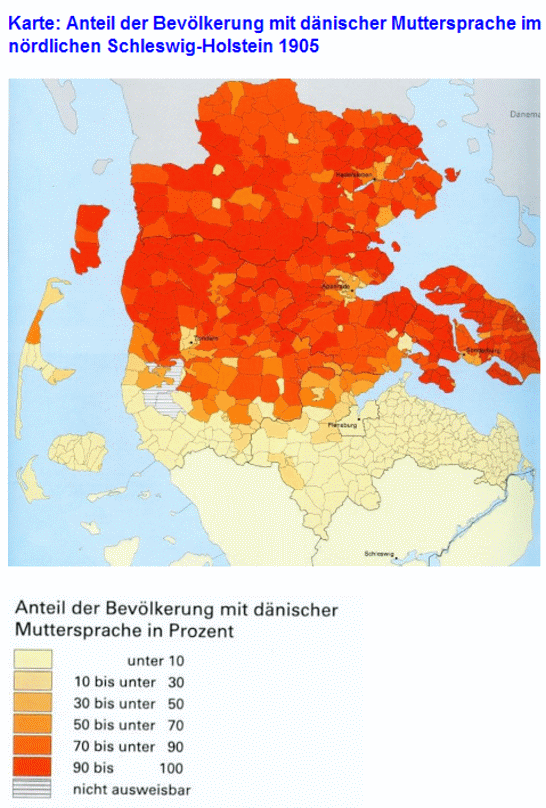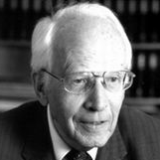|
Interessantes
aus dem Lügenportal Wikipedia, der
selbsternannten "Freien Encyklopedie"
Im deutschsprachigen Artikel über den
Franzosen Jean-Claude Pressac  liest man:
liest man:
"Jean-Claude
Pressac (* 1944; † 23. Juli 2003) war ein französischer
Chemiker, Apotheker und Historiker.
In seinem 1993 veröffentlichten Buch Les Crématoires
d’Auschwitz (dt. „Die Krematorien von
Auschwitz“) analysierte Pressac die Funktionsweise
der Krematorien von Auschwitz und belegte die
Verstrickung verschiedener deutscher Unternehmen in
das Massenvernichtungsprogramm. Einzelheiten von
Pressacs Ausführungen sind in neueren Forschungsbeiträgen
korrigiert worden, so einige seiner Auslegungen von
Dokumenten, die er teils zu Unrecht für Fälschungen
erklärte, und seine bei weitem zu niedrig angesetzte
Schätzung der Zahl der in Auschwitz ermordeten Juden.
Der Historiker Franciszek Piper  warf Pressac vor: „Im allgemeinen ist er bestrebt,
die Zahl der Opfer zu minimieren, die Kapazität der
Krematorien und Gaskammern zu verringern und den
Zeitpunkt des Treffens bestimmter Entscheidungen und
Maßnahmen hinauszuzögern. .. Auschwitz steht
weiterhin für die Massenvernichtung unschuldiger
Menschen durch Gas“
warf Pressac vor: „Im allgemeinen ist er bestrebt,
die Zahl der Opfer zu minimieren, die Kapazität der
Krematorien und Gaskammern zu verringern und den
Zeitpunkt des Treffens bestimmter Entscheidungen und
Maßnahmen hinauszuzögern. .. Auschwitz steht
weiterhin für die Massenvernichtung unschuldiger
Menschen durch Gas“
In der
italienischen Wikipedia-Version findet man folgenden
Text:
"Jean-Claude Pressac (1944 – 23 luglio 2003) è stato uno storico e farmacista francese.
Il primo lavoro nel quale affronta tale questione è 'Auschwitz. Technique and operation of the gas chambers', un'opera di grande complessità, pubblicata negli Stati Uniti nel 1989; successivamente, nel 1993, integra lo studio precedente con 'Les Crématoires d’Auschwitz. La machinerie du meurtre de masse', che si avvarrà della possibilità offerta dall'apertura degli archivi dell'ex Unione Sovietica. Muore di infarto a soli 59 anni. I suoi studi costituiscono un riferimento fondamentale e imprescindibile per la storiografia dell'Olocausto.
Non mancarono peraltro, nei suoi confronti, accuse di "cripto-revisionismo" e di "riduzionismo" (Francziszek Piper, “Die Zahl der Opfer von Auschwitz”, Verlag Staatliches Museum in Oswiecim, 1993, p.202). Egli, in effetti, sulla base di valutazioni tecniche, ridusse le stime delle vittime dei "campi detti di sterminio": "Chelmno: da 80 a 85.000 invece di 150.000; Belzec: da 100 a 150.000 invece di 550.000; Sobibor: da 30 a 35.000 invece di 200.000; Treblinka: da 200 a 250.000 invece di 750.000; Majdanek: meno di 100.000 invece di 360.000" (si veda l'intervista in Valérie Igounet, "Histoire du négationnisme en France", Éditions du Seuil, Paris 2000, pag. 640), mentre le vittime di Auschwitz non sarebbero state, complessivamente, più di 700,000 ("Le macchine dello sterminio. Auschwitz 1941-1945", Feltrinelli, Milano 1994, p. 173). "Quanto al massacro degli Ebrei, molte nozioni fondamentali devono essere completamente corrette. Le cifre proposte dalla storiografia ufficiale sono da rivedere da cima a fondo. Il termine di “genocidio” non conviene più" ("Histoire du négationnisme en France", cit., p.
641)  ." ."
In der
französischen Wikipedia-Version findet man folgenden
Text:
"Jean-Claude Pressac (né en 1944 - mort le 23 juillet 2003) était un pharmacien français, par ailleurs connu pour ses travaux historiques autour des chambres à gaz d'Auschwitz.
Il publia ses conclusions dans son livre Auschwitz. Technique and operation of the gas chambers en 1989. Pressac réfuta non seulement les thèses négationnistes mais fournit au-delà également de précieux renseignements sur les techniques et l'organisation du génocide par les nazis. Son livre Les Crématoires d’Auschwitz. La machinerie du meurtre de masse, paru en 1993, expliquait au public le fonctionnement des crématoires d'Auschwitz et démontra l'implication de certaines entreprises allemandes dans la solution finale orchestrée par les nazis, en particulier les firmes Topf und Söhne
 et Kori
et Kori  , principaux constructeurs des fours crématoires. Dans cet ouvrage, Pressac estime entre 631 000 et 711 000 le nombre de juifs morts à Auschwitz." , principaux constructeurs des fours crématoires. Dans cet ouvrage, Pressac estime entre 631 000 et 711 000 le nombre de juifs morts à Auschwitz."
In der englischen
Wikipedia-Version heißt es:
"Jean-Claude Pressac (1944 - 23 July 2003) was a French chemist and pharmacist who later became a published authority on the Holocaust of World War II.
He published his conclusions along with much of the underlying evidence in his 1989 book, Auschwitz: Technique and operation of the gas chambers. In his 1993 Les Crématoires d'Auschwitz, he further delineated the operation of the crematoria at Auschwitz, and their integration into the larger Nazi program to eradicate the Jews of Europe. Pressac estimates that between 631,000 and 711,000 were killed at Auschwitz."
In der russischen Wikipedia-Version steht:
"Жан-Клод Прессак (фр. Jean-Claude Pressac, 1944 — 23 июля 2003) — французский исследователь системы массового уничтожения узников в нацистском лагере смерти Аушвиц (Освенцим).
В 1989 году Прессак совместно с Беатой Кларсфельд опубликовал книгу «Аушвиц. Техника и эксплуатация газовых камер» (Auschwitz, technique and operation of the gas chambers). В этой книге он приводит документальные подтверждения существования в Освенциме газовых камер, предназначенных для массового убийства людей.
После открытия советских архивов в 1990 году он с привлечением новых доступных документов написал новую книгу «Крематории Аушвица. Техника массовых убийств». В архивах КГБ СССР Прессак нашел документы строительного управления лагеря — примерно 80 000 документов в 600 папках. Он сделал с части этих документов 1500 фотокопий.
Книга была впервые издана на французском языке в 1993 году. В 1994 году она была переведена на немецкий и издана в Германии и Швейцарии. Прессак подсчитал минимальное число погибших в самом лагере, которое он определил от 631 до 711 тысяч человек."
Das 'Nizkor Project'  schrieb 1993/10/07:
schrieb 1993/10/07:
"Perhaps the most balanced judgement of Pressac's work has
recently been expressed by Raul Hilberg  , the U.S.'s -- and
probably the world's -- pre-eminent historian of the Holocaust.
Hilberg is the author of the encyclopedic three-volume
"Destruction of European Jewry," generally considered the classic
work in the field. , the U.S.'s -- and
probably the world's -- pre-eminent historian of the Holocaust.
Hilberg is the author of the encyclopedic three-volume
"Destruction of European Jewry," generally considered the classic
work in the field.
Hilberg both praises Pressac's work and suggests its limitations.
He says, first, that Pressac "had the merit to study a subject
whose importance had not been fully appreciated. The history of
the construction of Auschwitz raises crucial questions for
understanding the development of the process of the Final
Solution.... Pressac was the first to examine the subject closely
and to draw conclusions."
But, Hilberg adds, Pressac's work is "only a beginning." Pressac
is "not really an historian ... and some of his interpretations
could turn out to be erroneous," he believes. For instance,
Hilberg challenges Pressac's estimate of 630,000 Jews having been
killed in Auschwitz's gas chambers. His conclusion is that
Pressac's figure underestimates the real number of Jews murdered
in the camp, which Hilberg places at close to one million. And
for Hilberg, the difference in estimates is not merely
quantitative, but suggests a qualitatively different view of the
horrors of Auschwitz. In any case, the American historian
concludes, "there is still plenty of work for the historians of
the Final Solution to do."
Beurteilung der deutschen Übersetzung des Buches von Jean-Claude Pressac
'Die Krematorien von Auschwitz'  : : "Eine aufsehenerregende Analyse, wie die Technik des Massenmordes in Auschwitz
funktionierte - Für eine sachliche Debatte unentbehrlich. Über das unfassbare Geschehen von Auschwitz gibt es viele
Tausende Berichte, Zeugnisse von Opfern ebenso wie Geschehnisse der Täter. Aber was bislang nicht gab, ist der Beweis für die technische Durchführung des Massenmordes- und genau hier hakten in den letzten Jahren die
sogenannten "Revisionisten“, die Verfechter der „Auschwitz- Lüge"„ ein.
Um diesen Fälschern der historischen Wahrheit entgegenzutreten, sammelte der Autor J. C. Pressac in einer jahrelangen detektivischen Spurensicherung Beweise und erklärt, wie die Ermordung und anschließende Beseitigung von Hunderttausenden möglich war.
Anhand von Bauplänen, Korrespondenzen, Kostenvoranschlägen, Gesprächsprotokollen rekonstruierte der Autor die Technik der Todesmaschinerie. „Zeugen lügen nie, aber sie können sich täuschen. Ich stelle die Erinnerung auf einen soliden Boden. Diejenigen, die aus der Geschichte eine Glaubensache machen, bereiten das Bett der Fälscher“.
Pressac stellt in seinem Buch: Die Krematorien von Auschwitz, die „Sehr geehrten Herren Ingenieure des Todes"
vor, die an die Ermordung von Menschen herangetreten sind, wie an ein beliebiges technisches Problem und sich so als williges Werkzeug der SS- Schergen erwiesen. Ohne ihrer Hilfe hätte die Todesfabrik von Auschwitz weder errichtet noch betrieben werden können.
J. C. Pressacs Buch eröffnet eine neue Dimension, weil es die technischen Aspekte der Ermordung der Juden akribisch erläutert und somit eine wichtige Antwort auf die Frage:
"Wie war es möglich?" gibt. Wer das Geschehen ganz begreifen will, der muss erklären, wie Hitler und seine Schreibtischtäter ihr Vernichtungswerk in die Tat umsetzten. Das leistet das Buch von Jean- Claude Pressac und schließt damit eine wichtige Lücke in der Holocaust- Forschung." Im
Buch von Valérie Igounet
'Histoire du négationnisme en France' ('History of Holocaust Denial in
France')  sind die vierzig
letzten Seiten einem Interview mit Jean-Claude
Pressac gewidmet. Dort findet man u. a. folgende
Ansichten Pressacs (in engl. Übersetzung):
sind die vierzig
letzten Seiten einem Interview mit Jean-Claude
Pressac gewidmet. Dort findet man u. a. folgende
Ansichten Pressacs (in engl. Übersetzung): "At Auschwitz,
Pressac began to obtain results which were at variance with the Communist history of the camp (p. 625). He deplored a farrago of testimonies, unusable because lacking in historical alertness” (p. 627). In regard to Serge
Klarsfeld  , he voiced reservations about his activity, reservations which were to become stronger and stronger over the years (p. 634). He accused Pierre Vidal-Naquet , he voiced reservations about his activity, reservations which were to become stronger and stronger over the years (p. 634). He accused Pierre Vidal-Naquet
 of being, on the subject of the number of Hungarian Jews deported during the war, among those who know nothing about it (p. 641). That man behaves hypocritically and can at times be lamentable and useless (p. 646); he may be compared to a hollow weather vane spinning in the wind of publications and current events because he himself has not undertaken any basic research upon which to support his peremptory and moralistic declarations (p. 647). Danuta
Czech
of being, on the subject of the number of Hungarian Jews deported during the war, among those who know nothing about it (p. 641). That man behaves hypocritically and can at times be lamentable and useless (p. 646); he may be compared to a hollow weather vane spinning in the wind of publications and current events because he himself has not undertaken any basic research upon which to support his peremptory and moralistic declarations (p. 647). Danuta
Czech  , speaking for the Auschwitz State
Museum , speaking for the Auschwitz State
Museum  , is found guilty of historical fakery (p.
643). The accounts of Georges Wellers , is found guilty of historical fakery (p.
643). The accounts of Georges Wellers  are no longer worth anything, which does not stop the Poles from using his faulty results as a serious
reference (p. 644). Pressac recalled that, contrary to so many alleged eyewitness accounts of the thick smoke of the crematoria, the Topf
are no longer worth anything, which does not stop the Poles from using his faulty results as a serious
reference (p. 644). Pressac recalled that, contrary to so many alleged eyewitness accounts of the thick smoke of the crematoria, the Topf
 incineration ovens gave off no smoke, and neither did those of the competing firms. In former times, Pressac used to set great store by the drawings of the alleged eyewitness David Olère
incineration ovens gave off no smoke, and neither did those of the competing firms. In former times, Pressac used to set great store by the drawings of the alleged eyewitness David Olère
 ; it is worth seeing how he reveals to us here the secret of this witness’s hoaxes (p. 649-650). For Pressac, the dossier on the concentration camp system is nothing less than rotten (pourri). New documents will inevitably emerge and disrupt the official certainties more and
more. What will be salvaged? Little (p. 652). The closing words of the interview, which, as it happens, are also the closing words of
Valérie Igounet’s book, evoke the wastebins of History. For whom or for what are these wastebins reserved? They are
- according to Pressac - reserved for the rotten dossier of concentration camp
history." ; it is worth seeing how he reveals to us here the secret of this witness’s hoaxes (p. 649-650). For Pressac, the dossier on the concentration camp system is nothing less than rotten (pourri). New documents will inevitably emerge and disrupt the official certainties more and
more. What will be salvaged? Little (p. 652). The closing words of the interview, which, as it happens, are also the closing words of
Valérie Igounet’s book, evoke the wastebins of History. For whom or for what are these wastebins reserved? They are
- according to Pressac - reserved for the rotten dossier of concentration camp
history." In
einer anderen Fassung dieses Interviews finden sich
die folgenden bemerkenswerten Ansichten Pressacs zur Zeitgeschichte  : : "En 1919 à Versailles, les Allemands furent voués à la vindicte
universelle et chargés de toutes les turpitudes imaginables, inventées par la
propagande de guerre alliée. Le véritable responsable de cette inutile boucherie était
la Russie, appuyée et financée par la France, et qui, en mobilisant son armée la
première, provoqua par là en quatre ans la mort de huit millions d'hommes. Bien que
le fait soit patent et ait été connu dans les années trente, comment le faire accepter aux
«poilus» sacrifiés en vain et pour qui le «boche» demeurait l'ennemi héréditaire?
...
Les premières grandes victoires allemandes [en 1941] furent remportées
parce que la Wehrmacht surprit l'Armée rouge en plein mouvement de
concentration, quelques semaines avant qu'elle ne s'élance sur les autoroutes allemandes et n'essaie
de soumettre l'Europe. L'armement soviétique d'alors l'indique
formellement: des chars rapides inaptes à combattre en Russie; la formation d'un million de
parachutistes, corps offensif par excellence; des avions d'assaut entassés sur les
terrains en bordure de la frontière germano-soviétique. Détruire ses propres
fortifications frontalières est un signe qui, lui non plus, ne trompe pas sur les
intentions de celui qui l'entreprend. Ces faits sont connus, irréfutables, mais pour
Monsieur tout le monde, l'Allemagne a déclenché le conflit en se ruant à l'assaut d'un
calme pays dont l'industrie, proclamée planifiée pour la production de biens
d'équipement devant amplement combler les besoins du peuple, avait fabriqué
plusieurs dizaines de milliers de chars, entraînant une réduction honteuse du niveau de
vie des habitants, situation misérable maintenue par une terreur omniprésente.
...
Seuls les historiens peuvent tenter d'obtenir un ordre de
grandeur chiffré sûr. Le chiffre de quatre millions de victimes, fixé après la guerre
après négociations entre les responsables communistes soviétiques et polonais, est de
propagande et sans fondement historique. De mon côté, j'ai proposé
800.000 puis, après une étude plus détaillée de la déportation des juifs de
Hongrie, 700 000. Le gouvernement polonais a imposé, pour des raisons politiques, qu'un million et demi de personnes
étaient mortes à Auschwitz-Birkenau. En imposant par une loi répressive les jugements du Tribunal de Nuremberg, ils tuent
la seule partie relativement valable de ce dernier, à savoir la publication des
documents allemands à charge. Quelle valeur pourront retenir les générations futures
d'un procès où les traductions allemandes furent biaisées, certains dossiers élagués
(cas du dossier SS sur le nouveau crématoire de Dachau), avec en prime, un film
d'accusation ne reposant plus sur rien? Je ne compte pas les tortures infligées aux
accusés lors des procès dits de Dachau. ...
Quant au massacre des juifs, plusieurs notions fondamentales doivent être entièrement
reprises. Les chiffres avancés sont à revoir de fond en comble. Le terme «génocide»
ne convient plus. Il faut abandonner le concept d'une
extermination systématique programmée dès l'origine.
De tous ces faits, terribles parce qu'ayant provoqué la mort de
femmes, d'enfants et de
vieillards, ne survivront que ceux établis. Les autres sont destinés aux poubelles de
l'Histoire. " Kein
Wunder, dass der Tod Jean-Claude Pressacs bei solchen
Ansichten in den etablierten HOLOCAUST-Kreisen keine Beachtung mehr fand. Die Medien
hatten ihn anfangs als eine Art Genie gefeiert, das, so wurde behauptet,
dem Revisionismus den Garaus gemacht habe. Als er am 23. Juli 2003 im Alter von 59 Jahren starb,
blieb sein Tod vollkommen unerwähnt. Vielleicht
wird sich das Lügenportal Wikipedia demnächst einmal die Mühe machen, Pressacs Ansichten
und Forschungsergebnisse unzensiert mitzuteilen oder doch wenigstens
inhaltliche Kongruenz zwischen den Pressac-Artikeln in den verschiedenen
Sprachversionen herzustellen  . . |

